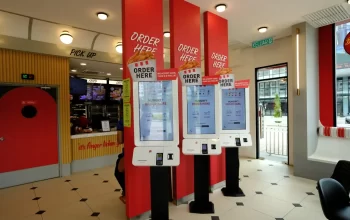The Transitional Kindergarten scam is being used by San Diego to prop up ADA and the collapsing school systems. By promising FREE day care—calling it transitional kindergarten, they are enticing families to put their children in government schools. But, once they get to an educational age, the parents are fleeing the racist, sexual grooming schools.
“A huge influx of transitional kindergarteners helped blunt the San Diego Unified School District’s rate of enrollment decline, shrinking it to the lowest in at least five years. But some district officials believe that if done right, universal transitional kindergarten could create a pipeline of students that helps blunt long-term trends of enrollment decline.
Even with the influx of day care kids, the District is losing enrollment. This is about money for the district and free child care for the parents—education is not the goal.
San Diego Unified Sees 4-Year-Olds as Way to Blunt Long-Term Enrollment Woes

A huge influx of transitional kindergarteners helped blunt the San Diego Unified School District’s rate of enrollment decline, shrinking it to the lowest in at least five years. But some district officials believe that if done right, universal transitional kindergarten could create a pipeline of students that helps blunt long-term trends of enrollment decline.
by Jakob McWhinney, Voice of San Diego, 1/3/23
In 2022 San Diego Unified’s rate of enrollment decline shrunk to the lowest level in at least five years, thanks largely to a significant influx of 4-year-olds now eligible for the district’s transitional kindergarten program.
That’s welcome news for a district already grappling with statewide and national trends that portend continued losses from lower birth rates and regional housing unaffordability. But some district officials think universal transitional kindergarten isn’t just an isolated shot in the arm for enrollment, but a long-term opportunity to blunt decline, or even reverse it.
“If we can build the relationship between students and their families with the school when they’re three, four years old, we are confident that many of those students will then stay in that school,” San Diego Unified board member Richard Barrera said.
That strategy makes sense to Emmanuel Prunty, a research associate at the Public Policy Institute of California who’s studied K-12 education policy issues like transitional kindergarten. Prunty said getting kids into the district early, and acclimating them with the public school system, may give SDUSD a better chance of retaining them.
“Perhaps these students might go to private schools if it weren’t for UTK or go to other school systems,” Prunty said. Prunty added that research shows that staying in a single district also produces long-term benefits for students.
The number of children in TK programs district-wide increased by 54 percent from the 2021 to 2022 school year. That amounts to over 1,500 new children in San Diego Unified schools.
Barrera is especially hopeful that this influx of new students will increase enrollment in neighborhood schools, which he believes have seen declining enrollment over the past decade because of families who’ve chosen to send their children elsewhere. Like many other districts, San Diego Unified automatically enrolls children attending transitional kindergarten at their neighborhood school into kindergarten at that same school, which may help smoothen the process of continuing at a district school.
, 2022
But whether the new families stick with the district depends on the quality of the transitional kindergarten program.
“If you are set up right to do this and you have trained staff ready to receive young students, you have the classrooms and the environment ready to serve young students … you will definitely increase your enrollment. You just brought in an entire grade level all at once,” said Rita Palet, the executive director of early education programs and services at the San Diego County Office of Education. “And then if they have a good experience, they’ll continue on (at district schools). That’s the key, is the good experience.”
But, Palet said, the opposite can also be also true. Early childhood education is the first contact parents have with school, and if school districts are not prepared “then it can backfire.”
“Now I’ve had a bad experience, do I want to stay at that school district? Do I want to stay in that classroom? Do I want to continue on at that school site?” she said.
And the curriculum at current UTK programs at SDUSD schools has been criticized for not aligning with the kind of instruction children of that age need, with too much of a focus on kindergarten-level instruction and not enough on experiential learning. Recently elected board member Shana Hazan cited that as a reason for not enrolling her child in a San Diego Unified UTK program at October’s Politifest, saying she thinks the district will get it right but that it “it’s just not there yet.”
There have also been concerns that SDUSD does not have the proper facilities needed to support an influx of 4-year-olds. Voters recently approved the district’s fourth facilities bond measure in 14 years, which included over $100 million for new UTK facilities. Barrera acknowledged these issues and called SDUSD’s UTK programs a “work-in-progress.”
“It’s not perfect right now,” Barrera said said. “Not simply throwing kids into a kindergarten experience which is mostly academic but combining child development with academics is the model in our district. And we believe we’ll get there soon, where you see that consistency in our UTK classrooms.” 21, 2022
Recently elected San Diego Unified school board member Cody Petterson agrees that UTK could be a valuable tool for boosting enrollment but acknowledges that it isn’t a panacea.
“I do not think the district has done as much as it could have in the past to get out the good word in terms of our schools,” Petterson said.
But even given the new pipeline of students, and Petterson’s goal of better evangelizing the district, he worries the gravity of demographic trends may outweigh the interventions the district has at its disposal. After a decade and a half of steady declines in birth rates, they ticked up again this year. Still, even if birth rates continue to increase, the low birth rates of the past 15 years will inevitably diminish the number of school-age students. Plus, the region’s high cost of housing is chasing families away and the Covid pandemic broke the bond many families felt with institutions – including public schools.
Aside from the last bit, which is where Petterson’s messaging goal comes in, schools don’t have levers to pull to account for many of the challenges they face. And if enrollments continue to decline, the district could face cuts to statewide funding – which is largely tied to enrollment numbers.
“We’re going to have to confront the reality of declining enrollment, particularly in more affluent communities, and communities in which the price of housing continues to rise,” Petterson said. “These are big, big socio-economic demographic issues that we’re going to have to wrestle with.”



